#bailey singleton
Explore tagged Tumblr posts
Text


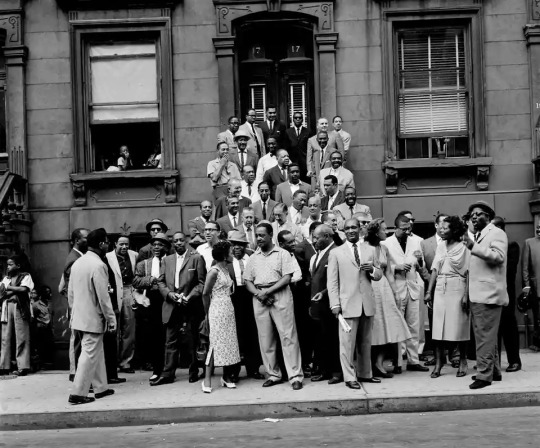
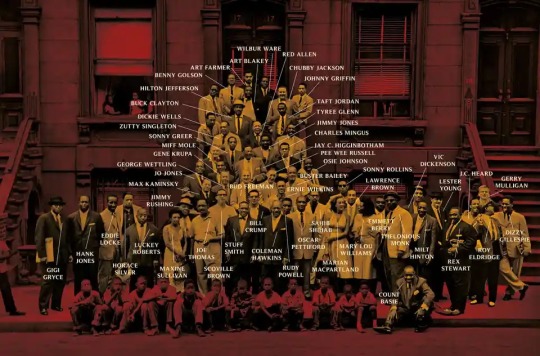
📸 Art Kane, 1958
‘I have no idea how they decided to stand where they did, and with whom, but they did. Slowly they formed themselves into a big group … and I saw they couldn’t have got themselves into a better position’ – Art Kane
#jazz#harlem#1950s#harlem 1950s#wilbur ware#red allen#art blakely#chubby jackson#benny golson#johnny griffin#Hilton Jefferson#buck clayton#Taft Jordon#dickie wells#tyree glenn#zutty singleton#Jimmy Jones#sonny greer#charles mingus#mingus#miff mole#jay c higginbotham#gene krupa#pee wee Russell#george wettling#osie johnson#jo jones#buster bailey#Sonny Rollins#Vic Dickenson
49 notes
·
View notes
Text
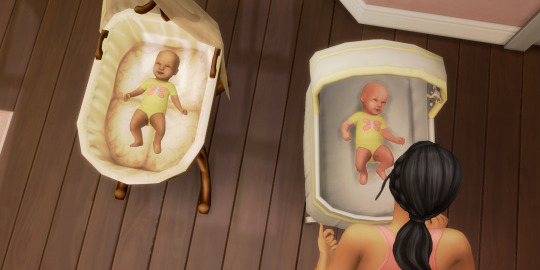

Heck yeah! Guess who had twins on their very first try!
In all honesty, I was kind of hoping for a singleton to ease into things... but nope! The fertility lot trait is going to be the death of me, I can already predict it.
Anyway, meet Ariana and Bailey Silversweater! Ariana is in the regular bassinet and Bailey is in the spellcaster one.
So does this mean Bailey is an occult? Am I really gonna get a bonus point on the first try? We'll have to confirm when she's a little older. Eek! I'm very excited for these little ones to age up!
27 notes
·
View notes
Photo
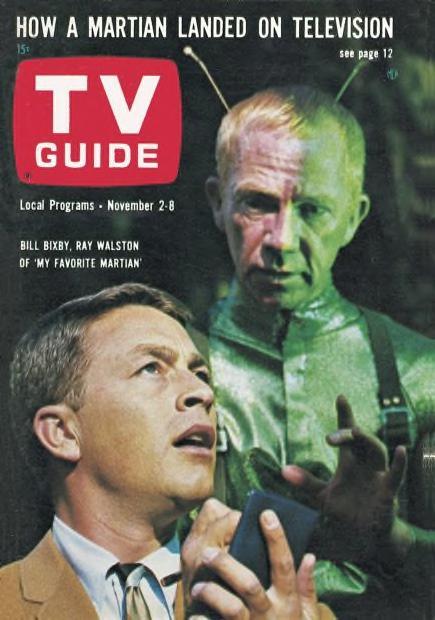
TV Guide - November 2 - 8, 1963
Wilfred Bailey Everett Bixby III (January 22, 1934 – November 21, 1993) professionally known as Bill Bixby, Film and television actor, director, producer, and frequent game-show panellist.
Bixby's career spanned more than three decades, including appearances on stage, in films, and on television series. He is known for his roles in the CBS sitcom My Favorite Martian as Tim O'Hara, in the ABC sitcom The Courtship of Eddie's Father as Tom Corbett, in the NBC crime drama series The Magician as stage Illusionist Anthony Blake, and the CBS science-fiction drama series The Incredible Hulk as Dr. David Banner. He also worked with Mariette Hartley in his final series, Goodnight, Beantown, (Wikipedia)
Herman Raymond Walston (November 2, 1914 – January 1, 2001) was an American actor and comedian, well known as the title character on My Favorite Martian. His other major film, television, and stage roles included Luther Billis (South Pacific), Mr. Applegate (Damn Yankees), Orville J. Spooner (Kiss Me, Stupid), J. J. Singleton (The Sting), Poopdeck Pappy (Popeye), Mr. Hand (Fast Times at Ridgemont High), Candy (Of Mice and Men), Glen Bateman (The Stand), and Judge Henry Bone (Picket Fences).
The success of My Favorite Martian typecast Walston and he had difficulty finding serious roles after the show's cancellation. He returned to character actor status in the 1970s and 1980s, and guest starred in such series as Custer, The Wild Wild West, Love, American Style, The Rookies, Mission: Impossible, Ellery Queen, The Six Million Dollar Man, Little House on the Prairie, and The Incredible Hulk, again with Bixby, in which Walston played Jasper the Magician in an episode called "My Favorite Magician".
In 1984, Walston played a judge on an episode of Night Court. Six years later, he made a guest appearance on an episode of L.A. Law. He later was hired for the role of Judge Henry Bone on Picket Fences; the character was originally a recurring role, but Walston proved to be so popular the character was later upgraded to a starring role.
He appeared in Star Trek: The Next Generation as Boothby, head groundskeeper at Starfleet Academy in San Francisco, and reprised the role twice on Star Trek: Voyager.
In 1988, he guest starred in an episode of the popular horror-fantasy show Friday the 13th: the Series, as a bitter, elderly comic-book artist who uses a demonically cursed comic book to transform himself into a killer robot and murder his erstwhile enemies.
Walston received three Emmy Award nominations for Best Supporting Actor in a Drama Series for his work on Picket Fences, winning twice, in 1995 and 1996. CBS cancelled the show after four seasons in 1996. Walston made a guest appearance in an episode of Dr. Quinn, Medicine Woman entitled "Remember Me", in which he portrayed the father of Jake Slicker, who was stricken with Alzheimer's disease.
Walston played Grandfather Walter Addams in Addams Family Reunion (1998). He appeared in the Touched by an Angel episode, "The Face on the Barroom Floor", which aired on October 15, 2000.
Walston made a cameo in the 7th Heaven episode, "One Hundred", which aired on January 29, 2001, four weeks after his death. (Wikipedia)
54 notes
·
View notes
Text


TODAY'S FROZEN MOMENT - Today marks the 65th Anniversary of this phenomenal photo - August 12th, 1958 - this now-famous photo was taken… later to be given the title "A Great Day in Harlem" when it was published in Esquire magazine. Art Kane, an art director for the magazine, was finally allowed to do a photo assignment... A jazz lover, Kane said he wanted to assemble the best in jazz for a shot, at 10 in the morning... Most people laughed at him...but...somehow he pulled this off; they showed up...as requested, to 17 East 126th Street...astonishing really... Subsequently, a documentary about the photo added to the magic... as did the allowance of the neighbors, the kids in the front and the folks in the windows… just so special… See below for a list of who's who... of the 57 musicians here, only 2 remain: Sonny Rollins and Benny Golson... but the shot, like all of the music, is eternal…
[01 – Hilton Jefferson, 02 – Benny Golson, 03 – Art Farmer, 04 – Wilbur Ware, 05 – Art Blakey, 06 – Chubby Jackson, 07 – Johnny Griffin, 08 – Dickie Wells, 09 – Buck Clayton, 10 – Taft Jordan, 11 – Zutty Singleton, 12 – Red Allen, 13 – Tyree Glenn, 14 – Miff Molo, 15 – Sonny Greer, 16 – Jay C. Higginbotham, 17 – Jimmy Jones, 18 – Charles Mingus, 19 – Jo Jones, 20 – Gene Krupa, 21 – Max Kaminsky, 22 – George Wettling, 23 – Bud Freeman, 24 – Pee Wee Russell, 25 – Ernie Wilkins, 26 – Buster Bailey, 27 – Osie Johnson, 28 – Gigi Gryce, 29 – Hank Jones, 30 – Eddie Locke, 31 – Horace Silver, 32 – Luckey Roberts, 33 – Maxine Sullivan, 34 – Jimmy Rushing, 35 – Joe Thomas, 36 – Scoville Browne, 37 – Stuff Smith, 38 – Bill Crump, 39 – Coleman Hawkins, 40 – Rudy Powell, 41 – Oscar Pettiford, 42 – Sahib Shihab, 43 – Marian McPartland, 44 – Sonny Rollins, 45 – Lawrence Brown, 46 – Mary Lou Williams, 47 – Emmett Berry, 48 – Thelonius Monk, 49 – Vic Dickenson, 50 – Milt Hinton, 51 – Lester Young, 52 – Rex Stewart, 53 – J.C. Heard, 54 – Gerry Mulligan, 55 – Roy Eldridge, 56 – Dizzy Gillespie, 57 – Count Basie.]
[Mary Elaine LeBey]
78 notes
·
View notes
Text
Birthdays 6.10
Beer Birthdays
Wagner Falci (1978)
Five Favorite Birthdays
Maurice Sendak; writer, artist, illustrator (1928)
Eliot Spitzer; politician (1959)
Kate Upton; model (1992)
Howlin' Wolf; blues singer (1910)
E.O. Wilson; biologist (1929)
Famous Birthdays
F. Lee Bailey; attorney (1933)
Clyde Beatty; circus performer, lion tamer (1903)
Saul Bellow; writer (1915)
Bill Burr; comedian (1968)
Jimmy Chamberlain; rock drummer (1964)
Gustave Courbet; artist (1819)
Kim Deal; rock bassist (1961)
Dan Fouts; San Diego Chargers QB (1951)
Judy Garland; actor, singer (1922)
Gina Gershon; actor (1962)
Joao Gilberto; Brazilian singer, guitarist (1931)
Rich Hall; comedian (1954)
Elizabeth Hurley; model, actor (1965)
Lionel Jeffries; actor (1926)
Tara Lipinski; figure skater (1982)
Frederick Loewe; composer (1904)
Herman Schlegel; German ornithologist (1804)
Jacques Marquette; French explorer (1637)
Hattie McDaniel; actor (1895)
James McDivitt; astronaut (1929)
Fairfield Porter; artist (1907)
Maxi Priest; reggae singer (1960)
Jurgen Prochnow; actor (1941)
Terrence Rattigan; playwright (1911)
William Rosenberg; Dunkin’ Donuts founder (1916)
Ken Singleton; Baltimore Orioles RF (1947)
Leelee Sobieski; actor (1982)
Jeanne Tripplehorn; actor (1963)
Shane West; actor (198)
1 note
·
View note
Text
INFO DUMP FOR MY PRIMARY AU
SONIC: BATTLE LINE
PLOT
On the Planet Mobius, all is quiet. The population of Humans and Mobians alike live in harmony. Or so it seems. Under the shining exterior, a cold war between extremists and the government is starting to boil over. Head of the Science Division, Dr. Ivo Robotnik plots to use scientific advancements to turn the population against one another. As such, the Guardians of the United Nations scrambled a small platoon of heroes with remarkable powers in order to stop him. The conflict has been going for three years... and it's reaching a boiling point.
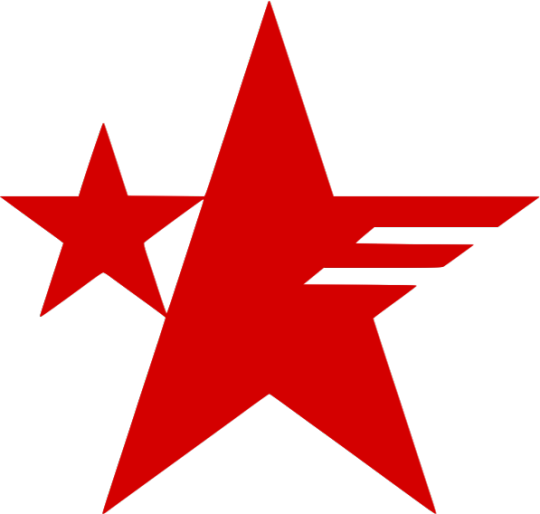
THE SECOND STAR RESISTANCE
Cole "Sonic" Aleena the Hedgehog (Powers: Super speed, mild wind manipulation.)
Michelle "Sonia" Aleena the Hedgehog (Powers: Invisibility.)
Jordan "Manic" Aleena the Hedgehog (Powers: Super strength, limited seismic manipulation.)
Miles "Tails" Prower the Fox (Powers: Two-tailed flight.)
Amy "Rusty" Rose the Hedgehog (Powers: Super strength, invisibility, cyborg anatomy.)
Elijah "Knuckles" Meadows the Echidna (Powers: Super strength, hyper durability.)
Clara "Rouge" Hopkins the Bat (Powers: Psionic shield.)
E-123 Omega (Powers: Internal nanometal arsenal.)
Samson Robotnik Beowulf "Shadow" Terios the Hedgehog (Powers: super speed, super strength, mastery over Chaos manipulation.)
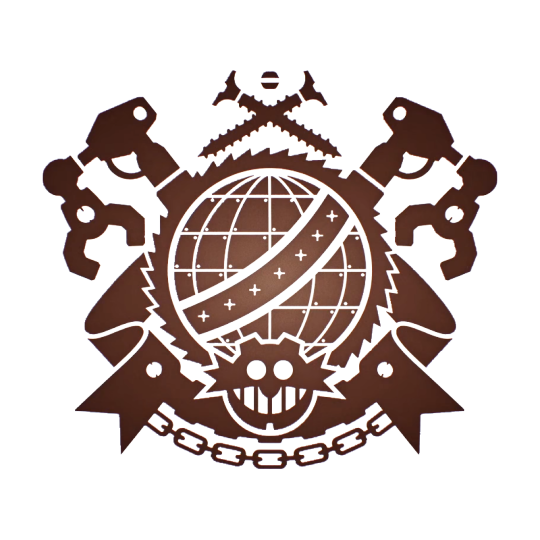
THE ROBOTON REGIME (HIGH COMMAND)
Dr. Ivo "Eggman" Robotnik (Powers: Cybernetic enhancements Badnik control.)
Jason "Sleet" Fredrick the Wolf (Powers: control over the nanometal drones known as the Dingo Pack.)
Snively Robotnik (Powers: Badnik control.)
Neo "Metal Sonic" Metallix the Android Hedgehog (Powers: Nanometal copy ability.)
Xander "Infinite" Oliver the Jackal (Powers: Unstable Chaos energy manipulation filtered through the Phantom Ruby.)
Agent Breezie the Synthetic Hedgehog (Powers: Hypnotic mist.)
THE ROBOTON REGIME (BADNIKS)
MotoBugs (Motorcycle beetles armed with submachine guns. Weak point, wheels.)
Buzz Bombers (Small VTOL wasps armed with low-burn plasma beams in the stinger. Weak point, torso.)
Crabmeat (Crustacean sentinels with claw-mounted rocket launchers. Weak point, joints.)
Optic Pods (Single-eyed scouts with micro missile salvos. Weak point, power core/eye.)
Slicers (Praying mantis guards with reinforced titanium blades. Weak point, back of the neck.)
SwatBots (Elite humanoid Badniks capable of speech that use built in high-burn plasma cannons and smart-lock missiles. Weak point, Achilles heel.)
Hover Units (Large helicopter drones armed with ultrasonic concussion cannons, fusion core missiles, and a deployable energy shield. Weak point, rotor blades.)
Tank-Rexes (Huge theropod-like tanks with powerful jaws, optical plasma cutters, drill tail, and hyper-concussive roar. Weak point, internal generator.)
WEAPON TYPES
Melee (Swords, hammers, pile bunkers, the list goes on.)
Ballistic (Firearms that use traditional bullets. Effective against lighter Badniks, but useless against SwatBots and large units.)
Plasma (Firearms that utilize plasma engines rather than standard ammunition. Rare, but effective against more elite Badniks.)
Explosive (Be it a rocket launcher or grenade, these weapons pack a punch. Can be just as damaging to the wielder as it is to the enemy.)
HEADCANON VOICES SO FAR
Sonic - Benjamin Diskin
Sonia - Erica Mendez
Manic - Johnny Yong Bosch
Tails - Anthony Del Rio
Knuckles - Khary Payton
Amy - Jamie Lamchick
Rouge - Grey DeLisle
Omega - Keith David
Shadow - Ian Hanlin
Eggman - Charlie Adler
Sleet - Steve Blum
Snively - Peter MacNicol
Metallix - Ron Perlman
Infinite - Liam O'Brien
Breezie - Laura Bailey
SwatBots - Isaac Singleton Jr.
#sonic au#sonic fandom#sonic the hedgehog#shadow the hedgehog#miles tails prower#knuckles the echidna#amy rose#rouge the bat#e 123 omega#dr robotnik#sonic underground#sonia the hedgehog#manic the hedgehog#infinite the jackal#au#alternate universe#fanfiction#holy shit this was fun#i hope you enjoy
12 notes
·
View notes
Text

{A Great Day in Harlem}
Red Allen
Buster Bailey
Count Basie
Emmett Berry
Art Blakey
Lawrence Brown
Scoville Browne
Buck Clayton
Bill Crump[2]
Vic Dickenson
Roy Eldridge
Art Farmer
Bud Freeman
Dizzy Gillespie
Tyree Glenn
Benny Golson*
Sonny Greer
Johnny Griffin
Gigi Gryce
Coleman Hawkins
J.C. Heard
Jay C. Higginbotham
Milt Hinton
Chubby Jackson
Hilton Jefferson
Osie Johnson
Hank Jones
Jo Jones
Jimmy Jones
Taft Jordan
Max Kaminsky
Gene Krupa
Eddie Locke
Marian McPartland*
Charles Mingus
Miff Mole
Thelonious Monk
Gerry Mulligan
Oscar Pettiford
Rudy Powell
Luckey Roberts
Sonny Rollins*
Jimmy Rushing
Pee Wee Russell
Sahib Shihab
Horace Silver*
Zutty Singleton
Stuff Smith
Rex Stewart
Maxine Sullivan
Joe Thomas
Wilbur Ware
Dickie Wells
George Wettling
Ernie Wilkins
Mary Lou Williams
Lester Young
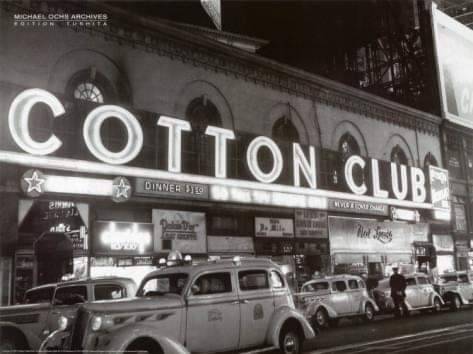

12 notes
·
View notes
Text
So this has been something that's been asked for a few times, so after a long times work, here we have it! A hypothetical voice cast for the characters of Autobot Academy. If there's a character you don't see, it's as we don't want to rush figuring out a character. We may update this list in the future, however it'll be in our own time, so we won't be taking any questions about specific missing characters. And hey, if you have your own voices that don't match up with these, then feel free to stick with that!
Autobots
Yuri Lowenthal - Hot Shot/Excellion II/DF Hot Shot/Ben Tennyson
Ashley Eckstein - Lightbright/Maxima/DF Lightbright
Tara Platt - Artillery/Maelstrom/ CG-11272017
ThunderPsyker - Bumblebee/Mjolnir
Morgan Garrett - Arcee/Diabla/Spidarcee
Nick “Lanipator” Landis - Rampage/Shockaract/Straxus
Brianna Knickerbocker - Transmutate/Transmutate X/Transmutate IX
Sam Vincent - Side Burn/Darkburn
Rick “Rice Pirate” Lauer - X-Brawn/Wrenchit
Chris Hackney - Mach Alert/Infernox/Lio Convo/Galva Convoy
Tiya Sicrar - Moonracer
Christine Marie Cabanos - Nightracer/Wipe-Out
Ashley Johnson - Glyph
Kanono - Tap-Out/AlbinoBug
Lizzie Caplin - Tremor/Shockblast
Erika Ishii - Sonar/Noisemaze
DoktorApplejuice - Armorhide/Armorbreak
Josh Keaton - Sideswipe/Firebreaker/Sunstreaker/Mismatch
Alejandro Saab - Steeljaw/Shatter-Pattern/Phantomjaw/Hellhound
Chris Miller - Thunderhoof
Sumalee Montano - Lodestar
Max Mittelan - Hosehead/Contagion
Sam Regal - Bomb-Burst
Kyle McCarley - Longshot
Ben Diskin - Misfire/Missilefire
Lucas Gilbertson - Saber/Dark Saber/Devcon/DF Devcon
Li Ming Hu - Hightail/Ravager
Mike Ginn - Gridlock/Ravager
Erica Mendez - Galaxy Flare
Michelle Ang - Riptide
Vanessa Marshal - Strongarm
Jill Harris - Nautica/DF Nautica
Courtney Ford - Muzzle
Nicolas Cantu - Wasp/DF Waspinator
Erin Fitzgerald - Convex
Archie Kao - Roadblock
Connor Kelley - Sky High
Haven Kendrick - Hot Rodimus/Raze
Michelle Yeoh - Windblade
Shannon McCormick - Rung
Elizabeth Maxwell - Chromia
Edward James Olmos - Fortress Maximus
Travis Willingham - Rollout
Andrew Francis - Scorch
John DiMaggio - Kup/Nitro Zeus/Leadfoot
Kyle Herbert - Star Convoy/Orion Pax/Toxitron
Mark Bonnar - Starscream
Paul McGann - Perceptor
Jake Johnson - Devaron
Herself Sarah Wiedenheft - Saperion/Arcrunner
Debra Wilson - Elita-1
Nicolas Cage - Overload
Nathan Fillion - Silverstreak/Killstreak
Ian MacKellen - Alpha Trion
Maximals
Tara Strong - Slash
Bryce Papenbrooke - Leobreaker
Matt Mercer - Bigfight/Death Convoy
Tom Gliblis - Break
Aleks Le - Stampy
Jack DeSana - Whoop-Kong
Roger Craig Smith - Bound Rogue
Charlie Day - Rattrap
Protectobots
Ashly Burch - Whirl
Heather Watson - Minerva
Aerialbots
Ratana - Stiletto
Cherami Leigh - Skyburst/Stormclash
Rachel Robinson - Surge
David B. Mitchell - Silverbolt
Axellerators
Jamie Chung - Flare-Up
Ron Botitta - Amp
Decepticons
Jason Marnocha - Megatron
Isaac C Singleton Jr. - Soundwave
Kathleen Delaney - Thunderblast
Vincent D'nofrio - Motormaster
Laura Bailey - Drag Strip
Shelby Rabara - Wildrider
David Kaye - Gnashteeth
Marc "Ganxingba" Soskin - Thundercracker
Ian Hanlin - Skywarp
Ryan Reynolds - Deadlock
Kaley Cuoco - Flamewar
Todd Haberkorn - Stonecrusher
Maurice LaMarche- Cryotek
Josh Powell - Onslaught
Corey Burton - Shockwave
Sylvester McCoy - “Doc”
JK Simmons - Horntrap
Resistance
Cameron Monaghan - Beta Maxx
Neo-Maximals
LaMonica Garret - Great Convoy
Peter Dinklage - King Atlas
Lydia Leonard - Black Convoy
Sam Witwer - Venator
Others
Colin Baker - Jhiaxus
Billy West/Michael Dorn - Dion/Umbra Convoy
Greg Cipes - Carjack
17 notes
·
View notes
Text
Top 10 books to read in 2023
1. The final offer by Lauren Asher
(Dreamland Billionaire Series)

2. Love Theoretically by Ali Hazelwood

3. King of pride by Ana Huang
(Kings of sin series)

4. Secretly yours by Tessa Bailey

5. Black ties and White Lies by Kat Singleton

6. Practice makes perfect by Sarah Adams

7. The Unwanted marriage by Catharina Maura
(The Windsor siblings series)

8. Unfortunately yours by Tessa Bailey

9. Brutalize me by Michelle Heard
(Corrupted Royal series)

10. Contractual Obligations by Elle Rivers

Follow inkandpapershreads for more book related content
#bookblog #bookstagram #bookblogger #booklover #bookstagrammer #books #bookworm #bookish #booknerd #book #bookaddict #bibliophile #booksofinstagram #bookreview #reading #bookcommunity #bookphotography #booksbooksbooks #bookaholic #booklove #readersofinstagram #bookshelf #b #bookobsessed #bookrecommendations #read #igreads #bookgram #reader #goodreads
3 notes
·
View notes
Text
LÉGENDES DU JAZZ
EDMOND HALL, UN CLARINETTISTE À NUL AUTRE PAREIL
Né le 15 mai 1901 à Reserve, en Louisiane, une petite ville située à environ quarante miles à l’ouest de La Nouvelle-Orléans, Edmond Hall était le fils d’Edward Blainey Hall et de Caroline Duhe. Issu d’une famille de musiciens, Hall avait sept frères et soeurs: Priscilla (née en 1893), Moretta (née en 1895), Viola (née en 1897), Robert (né en 1899), Clarence (né en 1903), Edward (né en 1905) et Herbert (né en 1907).
Le père de Hall, Edward, avait joué de la clarinette avec le Onward Brass Band. Le groupe comprenait aussi les oncles maternels de Hall, Jules Duhe au trombone, Lawrence Duhe à la clarinette et Edmond Duhe à la guitare. Trois des frères de Hall, Robert, Edmond et Herbert, étaient également devenus clarinettistes. Hall avait d’abord appris la guitare avec son oncle Edmond. Enfant-prodige, Hall avait toujours appris très rapidement. Comme l’avait expliqué son frère Herb à Manfred Selchow, l’auteur d’une biographie de Hall intitulée Profoundly Blue publiée en 1988, il n’avait fallu qu’une semaine à Hall pour apprendre à jouer de la clarinette. Il expliquait: "He could play it within a week. He started Monday and played it Saturday.’’
Hall avait commencé à gagner sa vie comme homme à tout faire dans une ferme, mais en 1919, il en avait eu assez du travail manuel et, malgré les inquiétudes de ses parents qui ne croyaient pas qu’il pourrait bien gagner sa vie dans la musique, il avait décidé de partir pour La Nouvelle-Orléans pour devenir musicien de jazz.
DÉBUTS DE CARRIERE
Le premier groupe de La Nouvelle-Orléans avec lequel Hall s’était produit était celui de Bud Rousell (Bud Russell). Il avait également joué avec le tromboniste Jack Carey et le cornettiste de blues Chris Kelley.
En 1920, Hall s’était rendu dans une soirée de danse au Economy Hall de La Nouvelle-Oréans où le cornettiste et chef d’orchestre Buddy Petit se produisait. Petit ayant besoin d’un clarinettiste pour jouer avec son groupe, il avait recruté Hall. Après avoir fait partie du groupe durant deux ans, Hall s’était installé à Pensacola, en Floride, où il s’était joint au groupe de Lee Collins. Il avait joué par la suite avec Mack Thomas et avec les Pensacola Jazzers. Après avoir fait la rencontre du trompettiste Cootie Williams, Hall s’était joint aux Alonzo Ross’ DeLuxe Syncopators. C’est d’ailleurs avec ce groupe que Hall avait fait ses débuts sur disque, se produisant tant à la clarinette qu’aux saxophones alto, soprano et baryton.
Après être déménagé à New York en 1928, Hall était devenu membre de l’orchestre de Claude Hopkins avec qui il avait joué jusqu’en 1935, continuant de démontrer sa polyvalence en se produisant à la fois à la clarinette qu’aux saxophones alto et baryton.
Depuis 1922, Hall avait surtout joué comme saxophoniste alto et baryton, mais après s’être joint aux Sizzling Six de Billy Hicks, il était devenu à clarinettiste à plein temps.
Admirateur de longue date de Hall, le producteur John Hammond l’avait aidé à obtenir plusieurs contrats. Le 15 juin 1937, Hall avait notamment participé à une première session d’enregistrement avec la chanteuse Billie Holiday, qui en était alors à ses débuts, et qui était accompagnée de Lester Young au saxophone ténor. Au cours de cette période, il avait également enregistré avec les Uptown Serenades de Frankie Newton, Henry ‘’Red’’ Allen, Mildred Bailey, Misge Williams, Zutty Singleton, Joe Sullivan, Art Tatum, Ida Cox, Lionel Hampton, Josh White et W.C. Handy.
Lorsqu’en 1940, le trompettiste Henry "Red" Allen avait commencé à jouer au Café Society, le premier club multi-racial de New York, Hall était devenu le clarinettiste du groupe. Hall avait passé neuf ans au Café Society, ce qui lui avait permis de jouer et d’enregistrer avec plusieurs sommités du jazz de l’époque, dont Sid Catlett, Charlie Christian, Ida Cox, ’’Wild Bill'' Davison, Sidney De Paris, Vic Dickenson, Roy Eldridge, Bud Freeman, Coleman Hawkins, Eddie Heywood, J. C. Higginbotham, Meade Lux Lewis, Lucky Millinder, Oran ’’Hot Lips'' Page, Zutty Singleton, Joe Sullivan, Art Tatum, Jack Teagarden, Big Joe Turner, Helen Ward et Josh White.
Hall avait enregistré pour la première fois comme leader en février 1941. Hall s’était particulièrement fait connaître pour la pièce-titre ‘’Profoundly Blue’’, qui est aujourd’hui considérée comme un classique du jazz de l’entre-deux guerres. Produite par les disques Blue Note, la session mettait en vedette un quartet composé de Meade Lux Lewis au céleste, de Charlie Christian à la guitare, et d’Israel Crosby à la contrebasse.
À la fin de 1941, Hall avait quitté Allen pour se joindre au pianiste Teddy Wilson, un autre vétéran du Café Society. Le style de Hall avait beaucoup changé à l’époque, car son admiration pour Benny Goodman et Artie Shaw l’avait incité à améliorer sa technique. Après avoir tenté brièvement de jouer sur une clarinette de type Boehm, il était revenu au système Albert, avec lequel il avait continué de jouer jusqu’à sa mort.
Hall avait dirigé plusieurs groupes sous son nom avec qui il avait souvent enregistré dans les années 1940. Parmi ceux-ci, on remarquait les Edmond Hall's Blue Note Jazzmen, le Edmond Hall Sextet, le Edmond Hall Celeste Quartet, le Edmond Hall's Star Quintet, les Ed Hall and the Big City Jazzmen et le Edmond Hall's Swingtet. Les sessions d’enregistrements avaient toujours lieu entre les performances de Hall au Café Society et comprenaient souvent les musiciens du club. Devenu très populaire parmi les musiciens et les critiques, Hall avait aussi été invité régulièrement à participer aux concerts de Town Hall dirigés par le guitariste Eddie Condon.
En 1943, Hall avait dirigé une session avec une formation tout-étoile de Dixieland comprenant le trompettiste Sidney DeParis, le tromboniste Vic Dickenson et le pianiste James P. Johnson.
Lorsque Teddy Wilson avait quitté le Café Society pour former son propre trio en 1944, les anciens membres de son groupe avaient continué de se produire au club. À la demande du propriétaire Barney Josephson, Hall était devenu le chef d’orchestre du groupe. C’est également à cette époque que Hall avait été élu deuxième meilleur clarinettiste derrière son idole Benny Goodman dans un sondage des lecteurs du magazine Esquire. La deuxième place de Hall lui avait éventuellement valu d’être invité à participer à une session avec Coleman Hawkins et les Esquire All-Stars.
Au milieu des années 1940, Barney Josephson avait tenté d’attirer de nouveaux musiciens au Café Society. Hall avait finalement quitté le club en juin 1947. Lorsqu’au début de la même année, on avait annoncé un concert de Louis Armstrong à Carnegie Hall, Hall avait été recruté avec son petit groupe pour accompagner le trompettiste durant la moitié du concert. Le succès du concert avait éventuelement incité Armstrong à abandonner son big band pour former son propre petit groupe, les All Stars.
En septembre 1947, Hall s’était joint aux All-Star Stompers avec ‘’Wild Bill’’ Davison, Ralph Sutton et Warren ‘’Baby'' Dodds. Devenu très populaire comme accompagnateur, Hall avait aussi travaillé avec Bunk Johnson et enregistré avec de ‘’grosses pointures’’ du jazz de l’époque comme Art Hodes, Sidney DeParis, James P. Johnson, Eddie Condon, Bud Freeman, Mary Lou Williams, Mutt Carey, Punch Miller et Gene Krupa.
À la même époque, Barney Josephson avait offert à Hall d’aller jouer au Uptown Café Society avec un nouveau groupe. Cependant, les affaires avaient rapidement commencé à battre de l’aile, et Josephson avait fermé le club en décembre 1947. Hall avait donc décidé de retourner au Downtown Café Society mais l’aventure avait fait long feu, car le groupe avait été remplacé en juin 1948 par le Dave Martin Trio.
À la fin de 1948, Hall s’était produit au Savoy Cafe de Boston avec le groupe de Bob Wilber. À la même époque, Hall avait aussi fait la promotion d’un concert avec George Wein. Éventuellement, Steve Connolly, le gérant du Savoy Cafe, avait proposé à Hall de remplacer Wilber avec son propre groupe. Le groupe de Hall, appelé les Edmond Hall All-Stars, avait commencé à jouer au Savoy le 4 avril 1949.
Hall avait quitté le Savoy au début de mars 1950 pour retourner à New York. À l’époque, le groupe de Hall se produisait dans les clubs et les fetivals. Lors d’un engagement à San Francisco, Eddie Condon avait appelé Hall et lui avait offert d’aller jouer avec son groupe dans son club, le Eddie Condon's. En plus de jouer avec le groupe de Condon, Hall avait collaboré avec d’autres musiciens, la plupart du temps issus du groupe de Condon. Parmi les événements auxquels Hall avait participé à l’époque, on remarquait l’Annual Steamboat Ball (juin 1951) et des collaborations aux émissions de Dr. Jazz en 1952. Hall avait également participé à plusieurs sessions d’enregistrement avec Condon lors de sa collaboration avec le groupe.
À partir des années 1950, Hall avait souvent été confronté a la discrimination raciale. En 1951, Hall se produisait au Condon’s lorsqu’un caméraman qui immortalisait la performance du groupe sur pellicule lui avait demandé de céder sa place au clarinettiste Pee Wee Russell. Évidemment, Russell était blanc. Hall, qui était un homme fier, avait refusé et avait porté plainte à l’Union des musiciens. Condon et les autres musiciens de groupe avaient d’ailleurs appuyé Hall dans son refus. C’était une question de gros sous pour les producteurs qui craignaient d’avoir des problèmes dans les États du Sud en montrant un musicien de couleur à l’écran. Même si on en était arrivé à un compromis en tournant deux versions du film, c’est la version avec Hall qui avait été retenue comme version finale. Hall avait également rapporté qu’il avait souvent été apostrophé par la police au sujet de la façon doit il stationnait son automobile, alors que les musiciens blancs n’avaient jamais connu aucun problème de ce genre. À une autre occasion, on avait refusé à Hall et à son épouse de louer une chambre d’hôtel, ce qui les avait obligés à passer la nuit dans leur automobile.
De 1950 à 1955, Hall s’était produit chaque soir au club de son grand ami Eddie Condon à New York. Souvent le seul musicien de couleur à monter sur scène, Hall avait constamment brisé la barrière de couleur au cours de sa carrière en raison de son talent et de sa sonorité unique. Durant cette période, Hall avait aussi collaboré à l’occasion avec des musiciens comme Ralph Sutton, Mel Powell et Jack Teagarden.
En 1952, Hall s’était produit durant quelques semaines avec le Ralph Sutton Trio à St. Louis. Le groupe, qui était aussi composé du batteur Buzzy Drootin, était devenu le premier trio multiracial à se produire dans la ville.
En novembre 1952, Hall avait participé à un événement spécial appelé Hot Versus Cool, une sorte de compétition amicale opposant le jazz de La Nouvelle-Orléans au bebop. Les représentants du jazz de La Nouvelle-Orléans étaient Hall, Dick Cary, Vic Dickenson, Jack Lesberg, Jimmy McPartland et George Wettling. Le bebop était représenté par Ray Abrams, Don Elliott, Dizzy Gillespie, Al McKibbon et Max Roach. L’enregistrement publié à l’issue du concert s’était mérité cinq étoiles dans le magazine Down Beat. En 1954, Hall avait joué avec Ralph Sutton, Mel Powell et Jack Teagarden.
À la fin de 1955, Hall avait quitté le groupe de Condon pour jouer comme musicien invité sur l’émission de Teddy Wilson. Il avait par la suite remplacé Barney Bigard dans le groupe de Louis Armstrong dans le cadre d’une tournée en Europe et en Suède. Ironiquement, treize ans auparavant, Hall avait décliné une offre de Duke Ellington pour prendre la succession de Biggard dans son orchestre, car il désirait se concentrer sur sa carrière d’accompagnateur.
Commentant la performance du groupe, le critique Felix Blair avait écrit dans le New York Times: "America's secret weapon is a blue note in a minor key. Right now its most effective ambassador is Louis Satchmo Armstrong." La citation avait été reproduite par la suite dans la pochette de l’album Ambassador Satch (1956). Après la tournée, le groupe était retourné à Los Angeles pour participer au tournage de film High Society de Charles Walters mettant en vedette Grace Kelly et Bing Crosby. Hall avait également enregistré de grands succès avec l’orchestre, dont ‘’Mack the Knife’’ qui avait été publié sur l’album Satch Plays Fats et dans le coffret Satchmo - A Musical Autobiography. Hall avait aussi fait des apparitions régulières sur des émissions de télévision avec l’orchestre, dont les Timex All Star Jazz Shows.
Après de nouvelles tournées en Amérique du Sud, Australie, en Angleterre, en Scandinavie, en Italie, en Espagne et en France, le groupe s’était rendu au Ghana, en Afrique, où il s’était produit devant une foule record de 11 000 spectateurs. De retour aux États-Unis, le groupe s’était produit avec le New York Philharmonic. Le plus grand moment de la soirée avait été quand le chef d’orchestre Leonard Bernstein avait interprété un arrangement d’Alfredo Antonini du classique ‘’St. Louis Blues’’. Le concert, qui était présenté au Lewison Stadium de New York, avait attiré une foule de 21 000 personnes. Des extraits du concert avaient été repris dans le documentaire Satchmo the Great. Produit par Edward R. Murrow, qui avait également fait la narration, le film comprenait également des extraits de la tournée du groupe en Europe et au Ghana.
Après avoir fait une apparition dans le Ed Sullivan Show, le groupe était parti pour le Midwest afin de livrer une performance au Ravinia Festival de Chicago. Le groupe avait également participé à un concert-bénéfice organisé par le produceur Norman Granz au Hollywood Bowl de Los Angeles. En décembre 1956, le groupe avait enregistré l’album Satchmo – A Musical Autobiography. La publication de l’album avait été suivie d’une tournée aux États-Unis et en Amérique du Sud. Dans le cadre de la tournée, Hall avait été nommé membre honoraire du Hot Club De Buenos Aires.
Lassé des tournées, Hall avait décidé en 1958 de quitter les All-Stars et de prendre des vacances en Californie. Après avoir pris un peu de repos, Hall s’était produit avec ses vieux amis Eddie Condon, Ralph Sutton, Teddy Wilson, Red Allen et J. C. Higginbotham. Après avoir été invité à jouer à Toronto, Hall était retourné à Chicago pour livrer une performance au Jazz, Ltd. Club. À la fin de 1958, Hall était entré en studio pour enregistrer l’album Petit Fleur avec son sextet, qui comprenait certains de ses vieux amis du club Cafe Society dont Vic Dickenson. En 1958-59, Hall avait enregistré deux albums comme leader. Son frère Herb avait même joué dans certaines pièces.
Impressionné par la courtoisie et par l’absence de discrimination raciale qui avait prévalu au Ghana durant son premier séjour en Afrique avec les All-Stars de Louis Armstrong, Hall avait décidé de s’y installer et de fonder une école de musique. Au début, Hall était allé au Ghana avec son épouse Winnie dans le cadre d’un voyage exploratoire, mais ils avaient finalement décidé de s’y installer en permanence. Avant de partir pour l’Afrique, Hall avait été invité à se produire au South Shore Jazz Festival de Milton, au Massachusetts. Avant son départ, Hall avait aussi enregistré l’album Rumpus on Rampart Street (1959) avec son orchestre. Finalement, les tentatives de Hall de fonder une école de musique au Ghana s’étaient soldées par un échec. Incapable d’attirer suffisammet d’étudiants dans ses pratiques, Hall avait été confronté au manque de discipline de ses élèves et avait décidé de rentrer aux États-Unis.
DERNIERES ANNÉES
En 1961, Hall s’était envolé pour Copenhague, au Danemark, afin de se produire comme musicien invité avec le Papa Bue's Viking Jazz Band. Après être rentré aux États-Unis, Hall avait réuni les Hall American Jazz Stars en vue d’une performance au club Condon’s de New York. Au début des années 1960, Hall avait continué de travailler régulièrement. Il avait notamment fait une tournée avec Yves Montand et Chris Barber. Il avait aussi enregistré avec Leonard Gaskin et Marlowe Morris. En 1962 et 1964, Hall avait également fait une tournée au Japon avec les Dukes of Dixieland. En plus d’avoir joué avec les Newport Jazz Festival All Stars, il se produisait aussi régulièrement avec la Eddie Condon Gang.
En 1964, Hall s’était installé à Cambridge, au Massachusetts, avec son épouse. Hall s’était également produit à Carnegie Hall dans le cadre d’un hommage à Eddie Condon. Il avait aussi fait de nombreuses apparitions dans les festivals de jazz, souvent avec son grand ami le tromboniste Vic Dickenson.
Durant quelques mois, Hall s’était produit sur une base régulière au restaurant Monticello, mais à l’époque, le jazz était devenu beaucoup moins populaire et il avait souvent dû se produire devant de maigres assistances. Si on l’avait écouté, Hall aurait joué pour aussi peu que 50$, mais son épouse avait refusé d’abandonner avant que l’offre n’atteigne de 70 à 75$. À l’époque, Hall était à la semi-retraite et pouvait se présenter presque sans le moindre préavis dans un club situé près de sa résidence où il accompagnait souvent un groupe appelé Tomasso and His Jewels of Dixieland. Selon Tomasso, le groupe ne savait jamais quand Hall allait faire son apparuition. Durant environ six mois, Hall s’était produit avec le groupe tout à fait gratuitement, juste pour le plaisir de jouer.
En novembre 1966, Hall était de nouveau parti en Europe dans le cadre d’une tournée avec le groupe Alan Elsdon. La tournée, qui avait débuté en Angleterre, avait permis au groupe de se rendre jusqu’en Allemagne, au Danemark et en Suède. Durant son séjour au Danemark, Hall avait également enregistré un album au studio Rosenbeg de Copenhague.
De retour aux États-Unis pour Noël, Hall avait fait une apparition en janvier 1967 avec le Café Society Band, dans le cadre d’un hommage au producteur John Hammond intitulé John Hammond's 30th Anniversary Concert – Spirituals to Swing. Le concert avait lieu à Carnegie Hall et mettait en vedette de grands noms du jazz comme le trompettiste Buck Clayton, le saxophoniste ténor Buddy Tate, Count Basie et Ray Bryant au piano, ainsi que les vocalistes Big Joe Turner et Big Mama Thornton. Le pianiste Pete Johnson participait également au concert, mais il avait été victime d’une attaque et n’avait pu jouer que d’une seule main.
Le 21 janvier, Hall s’était produit dans le cadre du Second Annual Boston Globe Jazz Festival. Le 3 février de la même année, Hall avait fait une prestation à la Governor Dummer Academy avec le groupe de George Poor dirigé par le trompettiste Bobby Hackett. Il s’agissait du dernier enregistrement de Hall, qui était décédé d’une crise cardiaque le 12 février à sa résidence de Boston. Il était âgé de soixante-cinq ans.
Hall s’est marié à deux reprises. Hall était membre du groupe de Buddy Petit lorsqu’il avait épousé en avril 1922 une jeune fille de dix-sept ans appelée Octavia Stewart. À l’époque, Stewart était enceinte, et on avait dû devancer la cérémonie pour sauver les apparences. Le 20 juillet, Stewart avait donné naissance à un garçon nommé Elton Edmond Hall, mais celui-ci était décédé prématurément le 3 décembre 1934. Le 12 mai 1938, Hall s’était remarié avec Winnifred (‘’Winnie’’) Henry, une jeune fille originaire de Cambridge, au Massachusetts. Hall avait rencontré Winnie trois ans auparavant au Ruggles Hall de Boston alors qu’il faisait partie du Hopkins Band. Même si le couple n’avait pas eu d’enfant, Hall et Winnie étaient très proches. Henry l’accompagnait même parfois dans le cadre de ses tournées. Le couple avait de nombreux amis en Angleterre qu’il visitait régulièrement lorsqu’il était de passage en Europe.
Travailleur infatigable, Hall pratiquait sans relâche, même lorsqu’il était en congé.
©-2025, tous droits réservés, Les Productions de l’Imaginaire historique
SOURCES:
‘’Edmond Hall.’’ Wikipedia, 2024.
‘’Edmond Hall.’’ WBSS Media, 2024.
YANOW, Scott. ‘’Edmond Hall: Profiles in Jazz.’’ The Syncopated Times, 31 octobre 2020.
0 notes
Text
Getting Older With Bridget Jones
Photo: Alex Bailey/Universal Pictures/Everett Collection Time has always been ticking by for Bridget Jones. When Renée Zellweger first played Helen Fielding’s chaotic singleton in 2001’s Bridget Jones’s Diary, the character was fretting about being a “tragic spinster” at 32, an age in which plenty of Brooklynites are still living with multiple roommates and wondering if they can afford to spring…
0 notes
Text
Vanderbilt: 2024 Birmingham Bowl Champions
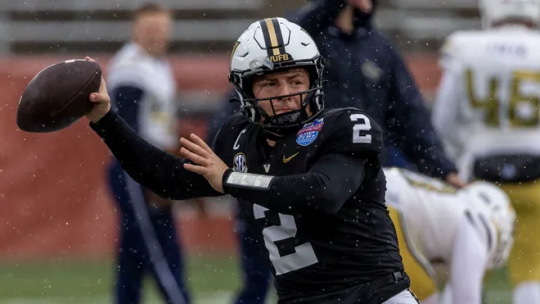
BIRMINGHAM, Ala. -- — Diego Pavia and Vanderbilt delivered another victory to end a surprising season.
Pavia threw three touchdown passes and ran for two more scores and Vanderbilt secured its first winning season since 2013 with a 35-27 victory over Georgia Tech on Friday in the Birmingham Bowl.
The Commodores (7-6) capped the year with another big game from Pavia, a New Mexico State transfer whose gritty play helped lead a huge turnaround from a 2-10 season.
“This is just a stepping stone of what we want to do here at Vanderbilt,” Pavia said. “We’ve got bigger dreams.”
Pavia accounted for three of his scores in a six-minute span starting late in the third quarter before Georgia Tech (7-6) rallied. A lightning delay with 7:17 left only pushed back the celebration of the Commodores' first bowl win since that 9-4 season 11 years ago.
“That was a tough fight and I knew it wasn’t going to be easy and the weather delay added a layer that we had to overcome,” Vandy coach Clark Lea said.
Pavia, the game MVP, completed 13 of 21 passes for 160 yards and gained 84 yards on 17 rushes. He had a 7-yard touchdown pass to Quincy Skinner Jr. and a 6-yard scoring run in the fourth quarter. Afterward, he announced his plans to return to Vandy next season, with the caveat that Lea and staffers like Jerry Kill come back.
Georgia Tech's Haynes King tried to bring his team back from a 35-13 deficit with a 9-yard touchdown pass to Jamal Haynes with 5:03 left and a 2-yarder to Bailey Stockton at the 1:30 mark. Both onside kick attempts failed.
“I thought the character of our team showed with the final seven minutes of the game, how they fought through adversity and continued to play until the end of the game," Georgia Tech coach Brent Key said.
King was 25-of-33 passing for 204 yards with three touchdowns and an interception. Haynes carried 17 times for 136 yards and had five catches for 32 yards.
The Commodores went ahead 21-13 on Pavia's 3-yard touchdown pass to Eli Stowers with 56 seconds left in the third quarter in a drive filled with fireworks.
Key was flagged for unsportsmanlike conduct protesting a pass interference call on the drive. It came after a non-call on what he thought was a kick catch interference that had buried the Yellow Jackets at their 2.
“There was dialogue and we have to control what we can control as a football team,” Key said.
Then, Tech was flagged for defensive holding and both teams were penalized for unsportsmanlike conduct after a scuffle on Vandy's sideline. The Yellow Jackets also had a roughing the kicker call on the extra point.
King then threw only his second interception of the season and CJ Taylor returned it 22 yards to the 11. Pavia was called for unsportsmanlike conduct after flipping the ball into the stands following a run but still produced a 3-yard touchdown to Eli Stowers.
“I don't know that there was a more perfect person to quarterback this team and to quarterback this program,” Lea said. "This is a chip on the shoulder program."
Takeaways
Georgia Tech: Had eight penalties for 90 yards and two turnovers that both led to touchdowns. The Yellow Jackets had already lost two key players to the transfer portal, edge rusher Romello Heights (Texas Tech) and leading receiver Eric Singleton Jr. (Auburn)
Vanderbilt: Staged a big turnaround in Lea's fourth season a year after going 0-8 in Southeastern Conference games last season. Lea retooled the staff and brought in players like Pavia, and it paid off.
“We've come a long way in 12 months,” Lea said.
Up next
Vandy's prospects for next season got brighter when a federal judge cleared the way for Pavia to return for another season, pending an NCAA appeal. Georgia Tech's King also can come back.
1 note
·
View note
Text

{A Great Day in Harlem}
Red Allen
Buster Bailey
Count Basie
Emmett Berry
Art Blakey
Lawrence Brown
Scoville Browne
Buck Clayton
Bill Crump[2]
Vic Dickenson
Roy Eldridge
Art Farmer
Bud Freeman
Dizzy Gillespie
Tyree Glenn
Benny Golson*
Sonny Greer
Johnny Griffin
Gigi Gryce
Coleman Hawkins
J.C. Heard
Jay C. Higginbotham
Milt Hinton
Chubby Jackson
Hilton Jefferson
Osie Johnson
Hank Jones
Jo Jones
Jimmy Jones
Taft Jordan
Max Kaminsky
Gene Krupa
Eddie Locke
Marian McPartland*
Charles Mingus
Miff Mole
Thelonious Monk
Gerry Mulligan
Oscar Pettiford
Rudy Powell
Luckey Roberts
Sonny Rollins*
Jimmy Rushing
Pee Wee Russell
Sahib Shihab
Horace Silver*
Zutty Singleton
Stuff Smith
Rex Stewart
Maxine Sullivan
Joe Thomas
Wilbur Ware
Dickie Wells
George Wettling
Ernie Wilkins
Mary Lou Williams
Lester Young
0 notes
Photo

TV Guide - April 11 - 17, 1964
Wilfred Bailey Everett Bixby III (January 22, 1934 – November 21, 1993) professionally known as Bill Bixby, Film and television actor, director, producer, and frequent game-show panellist.
Bixby's career spanned more than three decades, including appearances on stage, in films, and on television series. He is known for his roles in the CBS sitcom My Favorite Martian as Tim O'Hara, in the ABC sitcom The Courtship of Eddie's Father as Tom Corbett, in the NBC crime drama series The Magician as stage Illusionist Anthony Blake, and the CBS science-fiction drama series The Incredible Hulk as Dr. David Banner. He also worked with Mariette Hartley in his final series, Goodnight, Beantown, (Wikipedia)
Herman Raymond Walston (November 2, 1914 – January 1, 2001) was an American actor and comedian, well known as the title character on My Favorite Martian. His other major film, television, and stage roles included Luther Billis (South Pacific), Mr. Applegate (Damn Yankees), Orville J. Spooner (Kiss Me, Stupid), J. J. Singleton (The Sting), Poopdeck Pappy (Popeye), Mr. Hand (Fast Times at Ridgemont High), Candy (Of Mice and Men), Glen Bateman (The Stand), and Judge Henry Bone (Picket Fences).
The success of My Favorite Martian typecast Walston and he had difficulty finding serious roles after the show's cancellation. He returned to character actor status in the 1970s and 1980s, and guest starred in such series as Custer, The Wild Wild West, Love, American Style, The Rookies, Mission: Impossible, Ellery Queen, The Six Million Dollar Man, Little House on the Prairie, and The Incredible Hulk, again with Bixby, in which Walston played Jasper the Magician in an episode called "My Favorite Magician".
In 1984, Walston played a judge on an episode of Night Court. Six years later, he made a guest appearance on an episode of L.A. Law. He later was hired for the role of Judge Henry Bone on Picket Fences; the character was originally a recurring role, but Walston proved to be so popular the character was later upgraded to a starring role.
He appeared in Star Trek: The Next Generation as Boothby, head groundskeeper at Starfleet Academy in San Francisco, and reprised the role twice on Star Trek: Voyager.
In 1988, he guest starred in an episode of the popular horror-fantasy show Friday the 13th: the Series, as a bitter, elderly comic-book artist who uses a demonically cursed comic book to transform himself into a killer robot and murder his erstwhile enemies.
Walston received three Emmy Award nominations for Best Supporting Actor in a Drama Series for his work on Picket Fences, winning twice, in 1995 and 1996. CBS cancelled the show after four seasons in 1996. Walston made a guest appearance in an episode of Dr. Quinn, Medicine Woman entitled "Remember Me", in which he portrayed the father of Jake Slicker, who was stricken with Alzheimer's disease.
Walston played Grandfather Walter Addams in Addams Family Reunion (1998). He appeared in the Touched by an Angel episode, "The Face on the Barroom Floor", which aired on October 15, 2000.
Walston made a cameo in the 7th Heaven episode, "One Hundred", which aired on January 29, 2001, four weeks after his death. (Wikipedia)
35 notes
·
View notes
Text
Transformers One | Final Trailer (2024) - Chris Hemsworth, Brian Tyree H...
youtube
We see Optimus Prime and Megatron back in action again. This movie focuses on how things came to be. How Megatron and Optimus Prime became sworn enemies. What happened to their planet and what the Transformers have to do to save people.
This movie definitely shows where both Megatron and Optimus Prime come from. They reveal in the movie their original names.
This movie is a betrayal story just as well as an origin story. I definitely think that people in real life has had a friend to betray them and can relate to the story.
Transformers One definitely did not disappoint with colorful, fast-paced action scenes throughout the movie. Don't be fooled by the PG rating. The Transformer saga has been intense. This is an intense and action-packed story added to The Transformers saga of movies.
I would definitely recommend this movie for children of all ages. This movie show some life lessons and maybe in the future they will hang on to them.
I will give this movie A strong eight.
Cast:
Chris Hemsworth (Orion Pax / Optimus Prime (voice))
Brian Tyree Henry (D-16 / Megatron (voice))
Scarlett Johansson (Elita -1 (voice))
Keegan-Michael Key (B-127 (voice))
Steve Buscemi (Starscream (voice))
Laurence Fishburne (Alpha Trion (voice))
Jon Hamm (Sentinel Prime (voice))
Vanessa Liguori (Airachnid (voice))
Jon Bailey (Soundwave (voice))
Jason Konopisos-Alvarez (Shockwave / Guard 2 (voice) (as Jason Konopisos))
Evan Michael Lee (Jazz (voice))
James Remar (Zeta Prime (voice))
Isaac C. Singleton Jr. (Darkwing (voice) (as Isaac Singleton Jr.))
Steve Blum (Announcer Bot / Guard 1 (voice))
Jinny Chung (Chromia / Arcee (voice))
Josh Cooley (Control Room Guys / PA System / Skywarp (voice))
0 notes